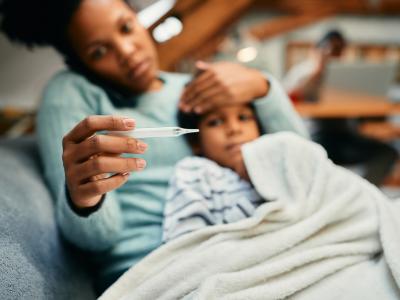Our weekly wrap-up of antimicrobial stewardship & antimicrobial resistance scans
Staph decolonization before joint replacement could cut costs, infections
A cost-effectiveness analysis indicates a Staphylococcus aureus decolonization protocol for patients undergoing hip and knee replacement could result in cost savings and fewer surgical-site infections (SSIs), Canadian researchers reported yesterday in Antimicrobial Resistance and Infection Control.
For the study, researchers from the University of Calgary and the University of Alberta used decision analytic models and a probabilistic sensitivity analysis (PSA) to evaluate the cost-effectiveness of an S aureus decolonization protocol previously studied in US patients undergoing hip and knee arthroplasty. In a 2012 trial, the protocol, in which patients at 16 US hospitals received chlorhexidine gluconate baths and twice-daily 2% intranasal mupirocin 5 days before surgery, was found to cut the rate of complex S aureus SSIs in half.
Using data from a hypothetical cohort of nearly 25,000 adult patients who underwent hip and knee replacement in Alberta from April 2012 through March 2015, the analysis found that the average cost for those receiving the decolonization protocol was $20,525, compared with $20,678 for those who received standard care, a cost saving of $153 per person, which would translate into savings of $1.26 million per year. The risk of developing a complex S aureus SSI was reduced from 0.4% to 0.2%. The PSA determined the decolonization protocol would be more effective and less expensive 84% of the time.
"Given our findings, we believe health systems should implement a decolonization protocol prior to hip and knee arthroplasty and continue surveillance of complex SSIs to determine if there is a reduction as anticipated," the authors of the study write.
Jul 11 Antimicrob Resist Infect Control study
Delayed valley fever diagnosis linked to excess costs, antibiotics
A review of patients with coccidioidomycocis (valley fever) has found that nearly 90% had a delay in diagnosis, and such delays were associated with excess costs and extensive antibacterial use, University of Arizona researchers reported yesterday in Emerging Infectious Diseases.
The retrospective review looked at the medical charts of 815 patients in Tucson, a coccidioidomycosis-endemic area, who sought care from January 2015 through September 2017. After excluding patients who had prior coccidiodomycosis, mistaken coding, and unconfirmed diagnoses, the researchers identified 276 patients with coccidioidomycosis. Of those, 30 (11%) received a diagnosis at presentation and 246 (89%) had a delay of more than a day, with 43% having a delay of more than a month.
Delayed diagnosis was associated with $589,053 in coccidioidomycosis-related costs, and 1,103 antibacterial medication orders submitted before coccidioidomycosis diagnosis. Vancomycin and daptomycin constituted 22% of antibacterial drugs ordered.
The authors of the study say the problem is that without specific laboratory confirmation, coccidioidomycosis, which typically manifests as a respiratory syndrome, cannot be distinguished from community-acquired pneumonia. Yet the necessary tests are conducted in less than 13% of patients with community-acquired pneumonia in urban Arizona ambulatory departments, and in only 2.8% of emergency-department patients.
"Our results suggest earlier diagnosis will lower costs and provide secondary benefits including patient reassurance, decreased antibacterial drug use, and improved antibiotic stewardship," they write. "This study reinforces the ongoing challenge to increase coccidioidomycosis awareness for healthcare providers and the urgent need to improve the ease, rapidity, and reliability of coccidioidomycosis testing."
Jul 11 Emerg Infect Dis dispatch
French scientists identify promising novel antibiotic class
A team of French scientists has developed a novel class of antibiotics based on a natural bacterial toxin, according to a paper this week in PLOS Biology.
The team of scientists from Université de Rennes and Inserme, a French public research organization, designed and synthesized the compounds, called peptidomimetics, by imitating a section of a toxin produced by S aureus to kill other bacteria (PepA). In tests against a broad range of gram-positive and gram-negative pathogens, two of four peptidomimetics developed by the team (Pep16 and Pep19) demonstrated effectiveness against methicillin-resistant S aureus (MRSA) in mild and severe sepsis mouse models, and against Pseudomonas aeruginosa and MRSA in a mouse skin infection model.
Testing of the compounds on human erythrocytes and kidney cells, zebrafish embryos, and mice showed no toxicity. In addition, after 2 weeks of serial passage performed against multidrug-resistant clinical isolates in vitro, and 4 or 6 days exposure in mice infected with MRSA, the compounds showed no development of resistance.
Analysis of the mechanism of action indicates the compounds are able to permeate the cell membranes of gram-positive and gram-negative bacteria, leading to bacterial death.
The scientists conclude, "We have identified potential therapeutic agents that can provide alternative treatments against antimicrobial resistance. Because the compounds are potential leads for therapeutic development, the next step is to start phase I clinical trials."
Jul 9 PLOS Biol study
Survey: Few countries have established targets for reducing antibiotic use
Originally published by CIDRAP News Jul 11
A survey of antimicrobial use reduction goals for human medicine in 30 countries has found that, as of 2017, less than a third had established targets, according to an article today in Eurosurveillance.
To review planned antimicrobial reduction goals in countries belonging to the Transatlantic Taskforce on Antimicrobial Resistance (TAFTAR), the European Centre for Disease Prevention and Control (ECDC) developed a questionnaire compromising 12 questions addressing whether countries had developed targets for reducing antimicrobial use in human medicine, the rationale for those targets, and how progress would be measured and monitored. The questionnaires were sent to all 28 European Union (EU) countries, plus Norway, Iceland, Canada, and the United States in March 2017. Thirty of 32 countries responded.
The countries that established targets are Belgium, France, Malta, the Netherlands, Norway, Slovenia, Sweden, the United Kingdom, and the United States. The reported targets and corresponding metrics, however, varied greatly among the countries. Of the 21 countries that had not established targets, 17 indicated that work on targets was underway.
"This review of the existing antibiotic targets in EU Member States, Norway, Iceland, Canada and the US is aimed at providing detailed information to countries willing to engage in the reduction of antibiotic use in humans," the authors of the paper write. "Monitoring of countries' progress towards existing targets, possible barriers and facilitators, as well as the assessment of these countries' need to revise their targets, should provide additional key information and may be the objective of a future survey."
Jul 11 Eurosurveill article
Drug-resistant, human-associated E coli clones found in Australian gulls
Originally published by CIDRAP News Jul 11
A study by Australian scientists has found that seagulls carry a wide array of drug-resistant Escherichia coli clones that resemble pathogenic, drug-resistant E coli clones from humans. The findings appeared in the Journal of Antimicrobial Chemotherapy.
In the study, scientists from Murdoch University in Western Australia collected Australian silver gull fecal samples from beaches in all Australian states to look for the presence of E coli with resistance to critically important antibiotics (CIAs). Of the 562 samples tested, 135 (23.8%) were positive for fluoroquinolone-resistant E coli, and 125 (21.7%) were positive for extended-spectrum cephalosporin-resistant E coli.
Whole-genome sequencing of 284 of the CIA-resistant isolates revealed that they belonged predominantly to human-associated extra-intestinal pathogenic E coli clones, including ST131 (17%), ST10 (8%), and ST1193 (6%). In addition, comparative analysis found that the isolates belonging to ST131 and ST1193—which are globally disseminated, highly virulent and drug-resistant E coli strains associated with urinary tract infections in humans—overlapped extensively with human clinical isolates in Australia and overseas.
The analysis also detected a single isolate of carbapenem-resistant and an isolate of colistin-resistant E coli carrying the MCR-1 gene—the first such isolate identified in Australian wildlife.
The authors of the study theorize the gulls, which were from areas with dense human populations, may have acquired the bacteria from leftover human food and garbage.
"The carriage of diverse CIA-resistant E coli clones that strongly resemble pathogenic clones from humans suggests that gulls can act as ecological sponges indiscriminately accumulating and disseminating CIA-resistant bacteria over vast distances," they write.
Jul 9 J Antimicrob Chemother abstract
Study shows decline in antibiotic prescribing in English primary care
Originally published by CIDRAP News Jul 10
The rate of antibiotic prescribing and the proportion of patients receiving antibiotics in primary care settings in England declined consistently from 2014 through 2017, researchers from King's College London reported yesterday in BMJ Open.
Analyzing data from 102 general practices in England, the researchers found that total antibiotic prescribing declined from 608 prescriptions per 1,000 person-years in 2014 to 489 per 1,000 person-years in 2017, with an estimated relative rate reduction (RRR) of 6.9% per year. And broad-spectrum beta-lactam antibiotic prescribing decreased from 221 prescriptions per 1,000 person-years to 163 (RRR, 9.3% per year).
The proportion of registered patients prescribed antibiotics in each year declined from just over 1 in 4 (25.3%) to just over 1 in 5 (21.1%). Declines in prescribing were similar for men and women and were seen in all age-groups, but the rate of decline was lower for patients over the age of 55 years than for younger patients.
When broken down by indication, antibiotic prescribing declined by 9.8% per year for respiratory infections, 5.7% for genitourinary infections, and 3.8% for no recorded indication. Overall, 38.8% of antibiotic prescriptions were associated with codes that did not suggest specific clinical conditions, and 15.3% of antibiotic prescriptions had no medical codes recorded.
The authors say the results show that declines in antibiotic prescribing in English primary care are broad-based, but they note that the slowest decline was seen in antibiotic prescriptions associated with no medical codes, and suggest this might be a target for future stewardship efforts.
Jul 9 BMJ Open study
MCR-1−carrying E coli identified in 4 Michigan patients
Originally published by CIDRAP News Jul 10
A colistin resistance surveillance program in a Michigan health system has identified four patients carrying the mobile colistin-resistance gene MCR-1, researchers reported today in Infection Control and Hospital Epidemiology.
From January 2016 through April 2017, the Michigan Medicine Clinical Microbiology Laboratory tested more than 15,000 clinical Enterobacteriaceae isolates and found that 95 patients had colistin-resistant isolates. Of the 36 isolates tested for the presence of MCR-1 gene, four (all E coli) were positive. Two isolates belonged to the same sequence type (ST 263), and two carried additional antibiotic-resistance genes.
Colistin is considered a last-resort antibiotic for treating multidrug-resistant infections.
The four patients included a 70-year-old woman with diabetes mellitus and nonalcoholic steatohepatitis, a 19-year-old man with spina bifida and recurrent urinary tract infections (UTIs), a 22-year-old healthy woman with a UTI, and a 77-year-old man with a history of cystectomy and ileal conduit for bladder cancer who was being treated for a complicated UTI. Transmission of MCR-1 between the patients was not identified. Epidemiologic investigation found that all four had travelled internationally and had antibiotic exposure within 6 months prior to MCR-1 identification.
"Further study is required to define mcr-1 prevalence in community and healthcare settings, to identify risk factors for mcr gene acquisition, and to describe the natural history of mcr-1 gene carriage," the authors write.
As of November 2018, 53 human cases of MCR-1−producing Enterobacteriaceae have been reported in 19 US states, including Michigan.
Jul 10 Infect Control Hosp Epidemiol abstract















